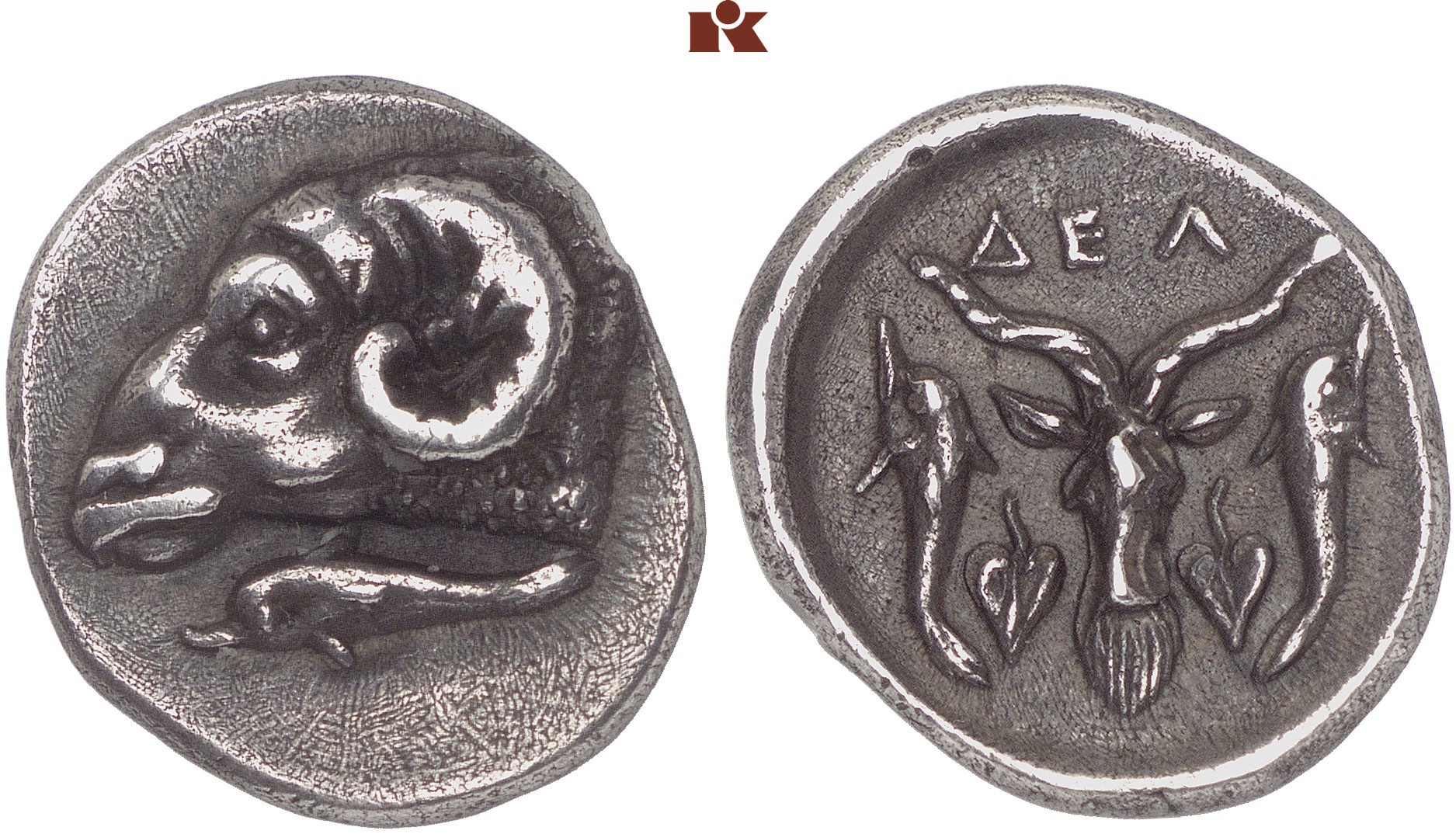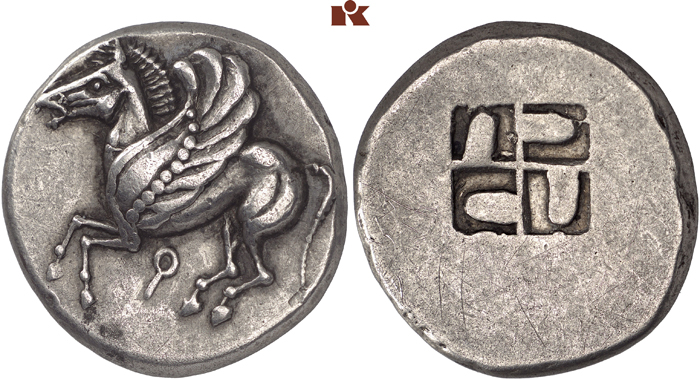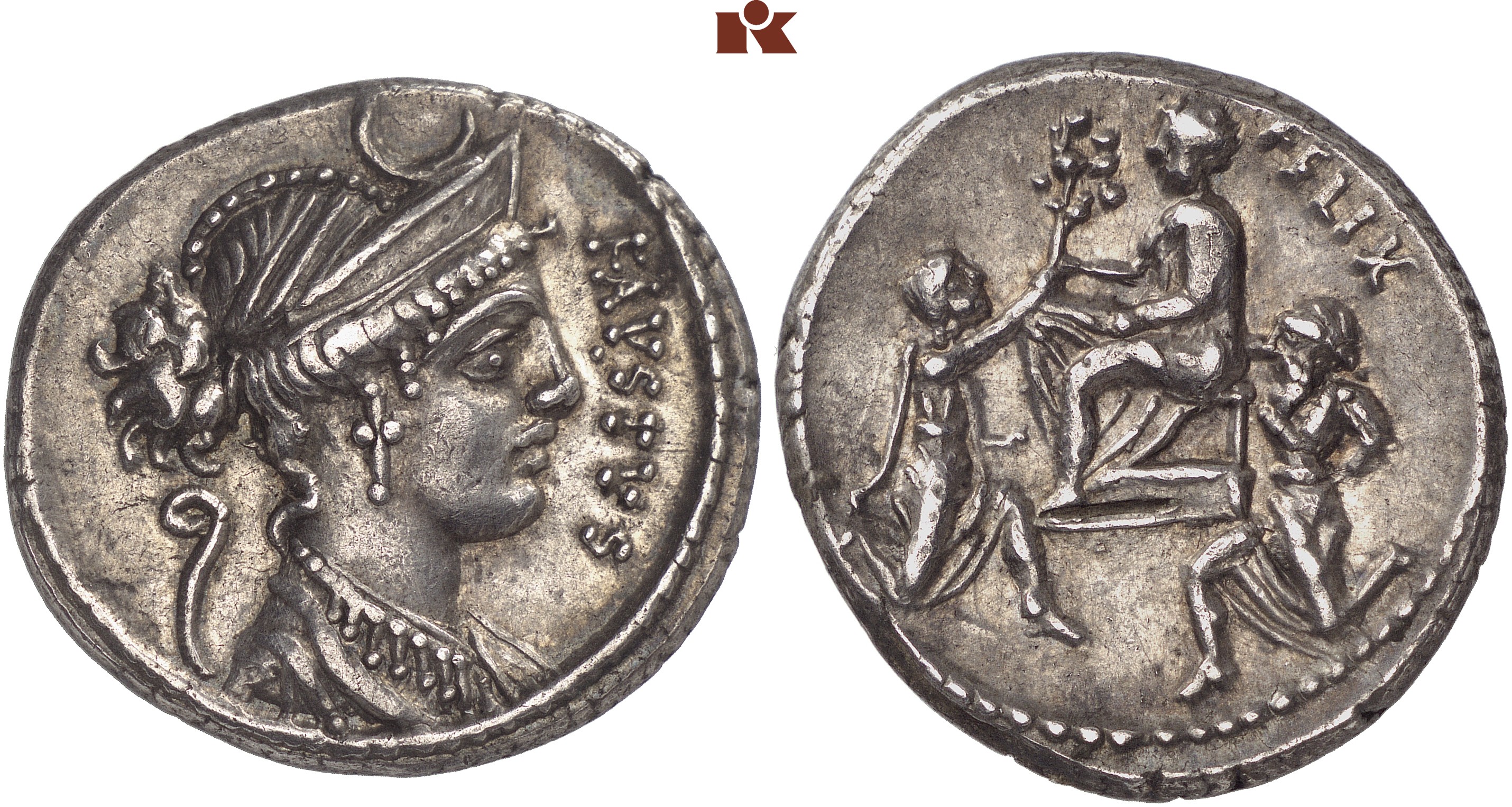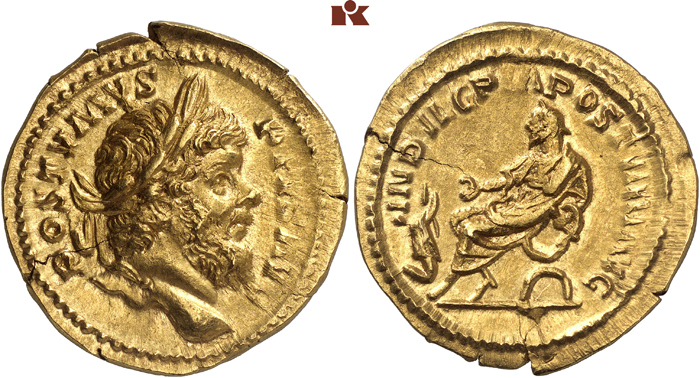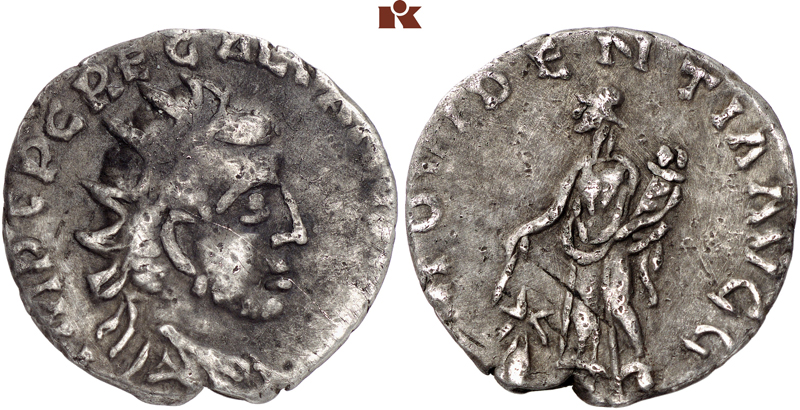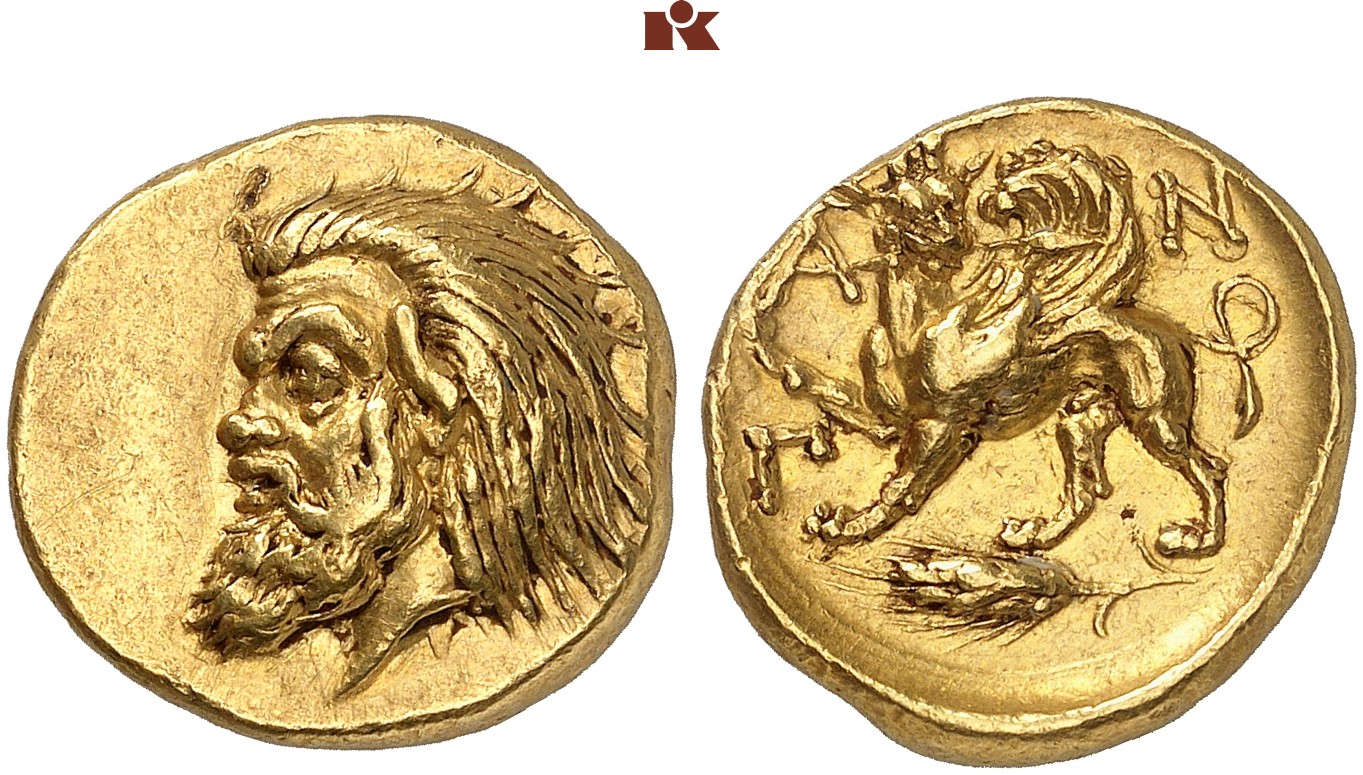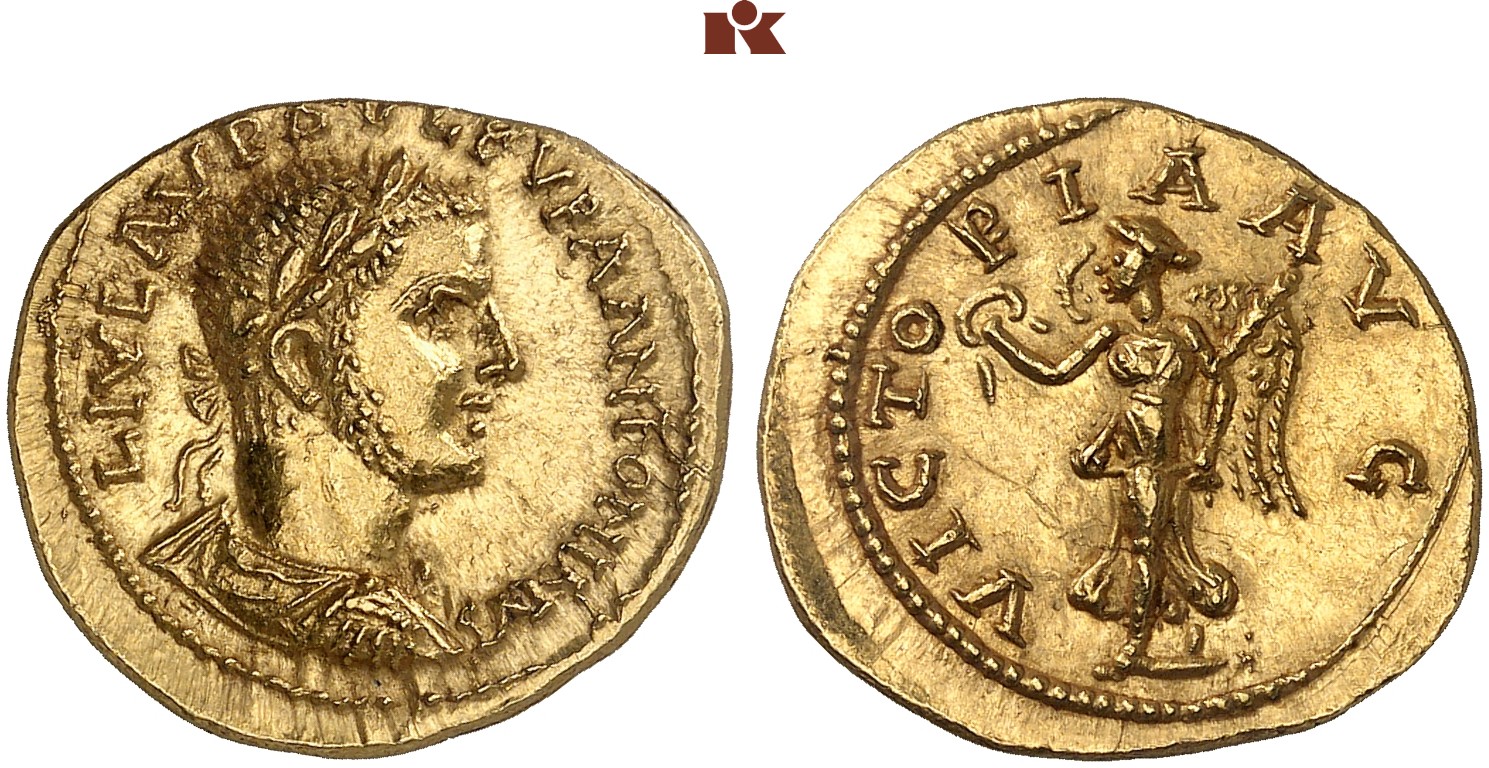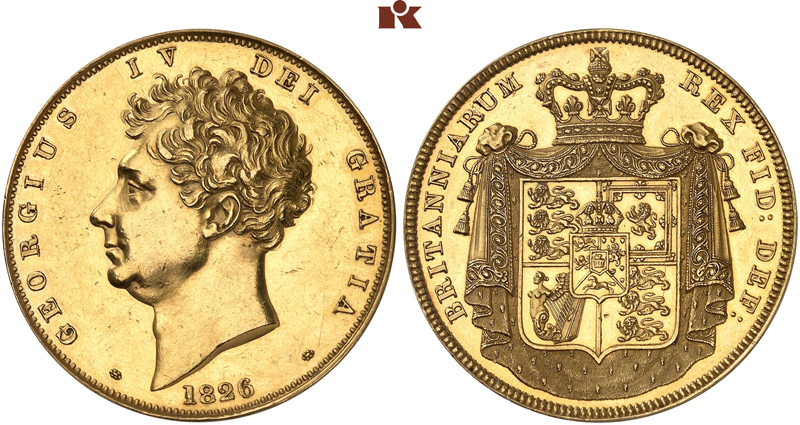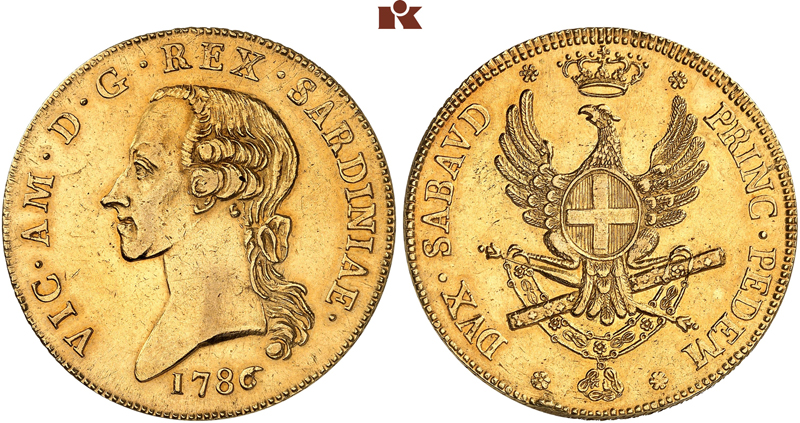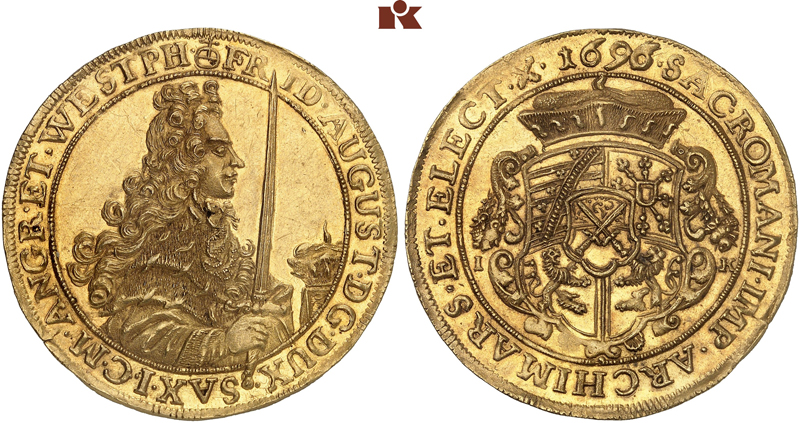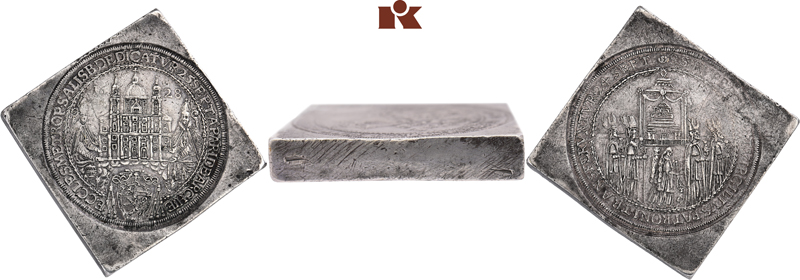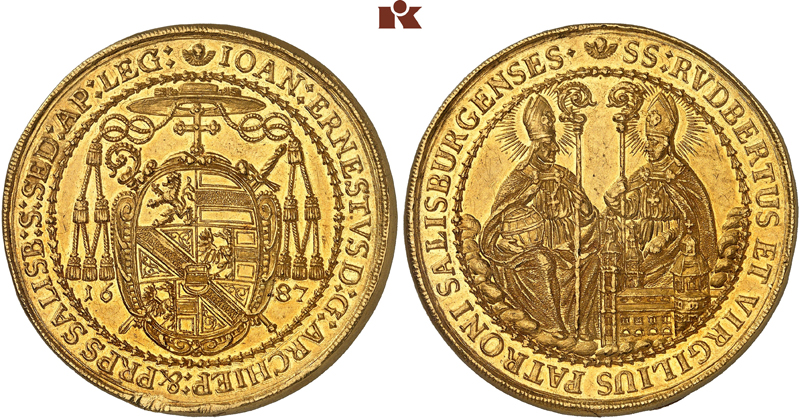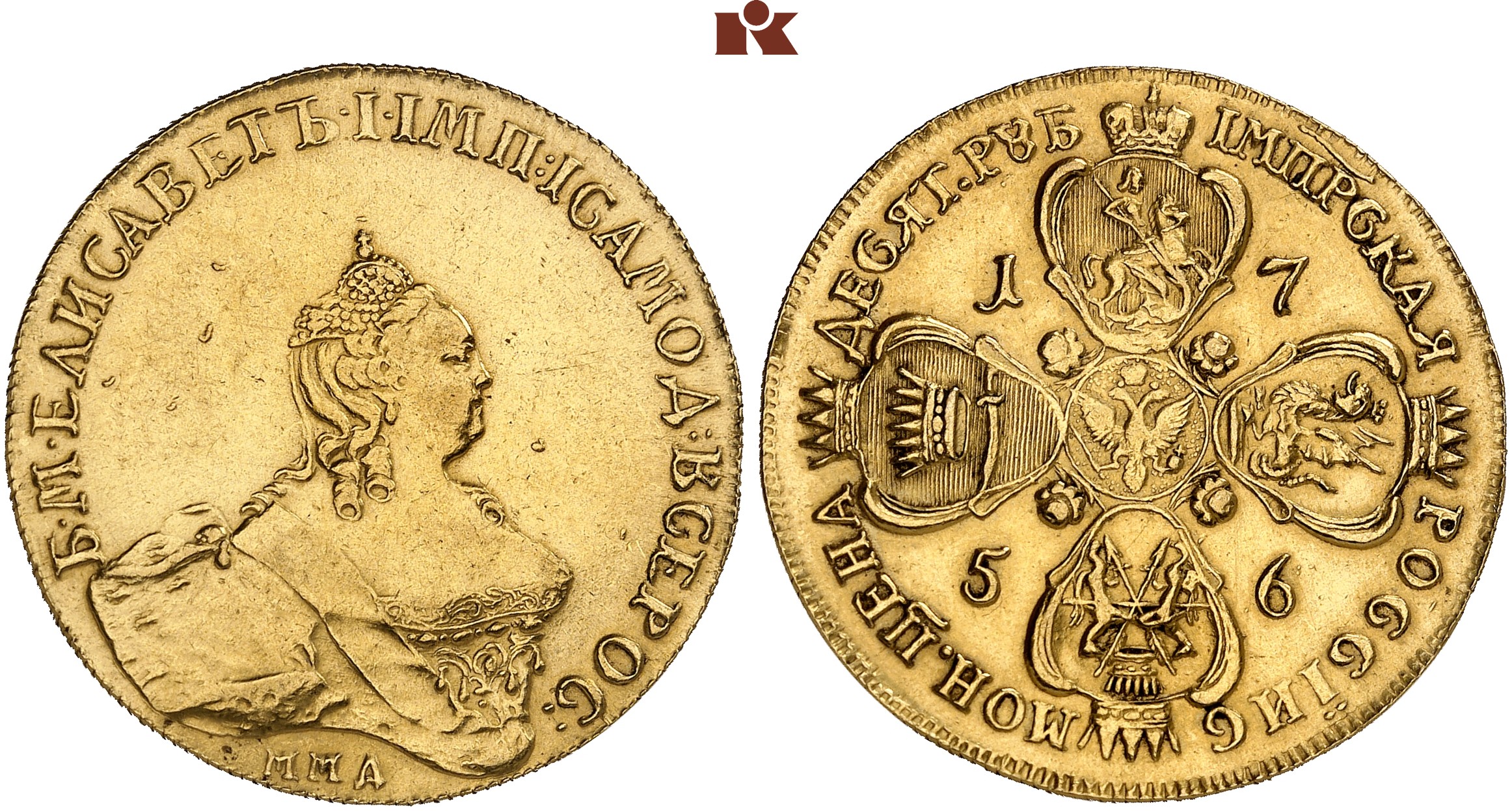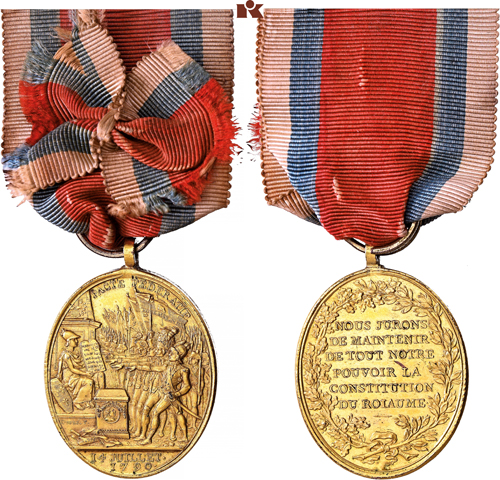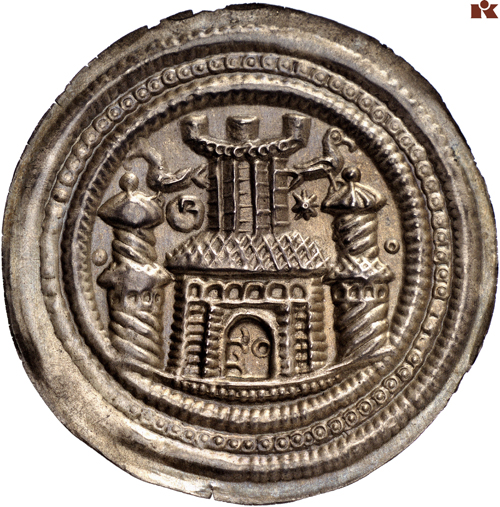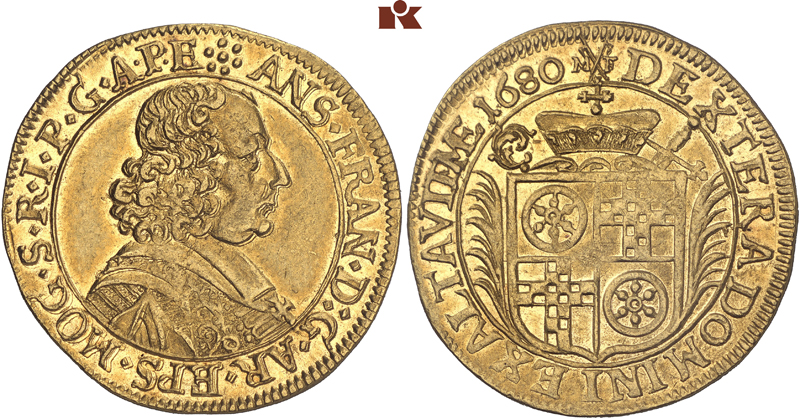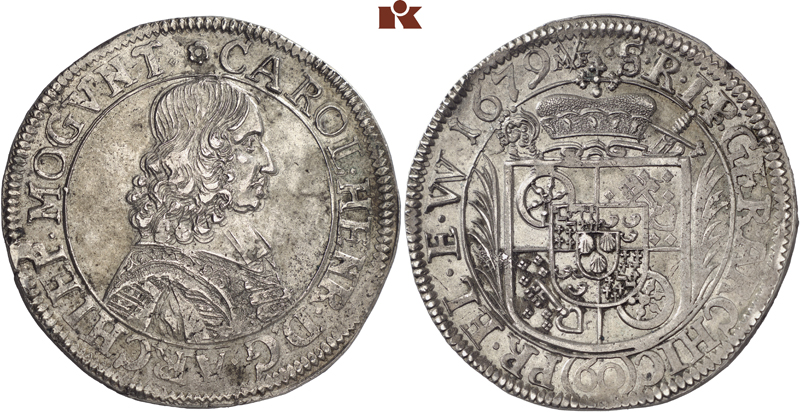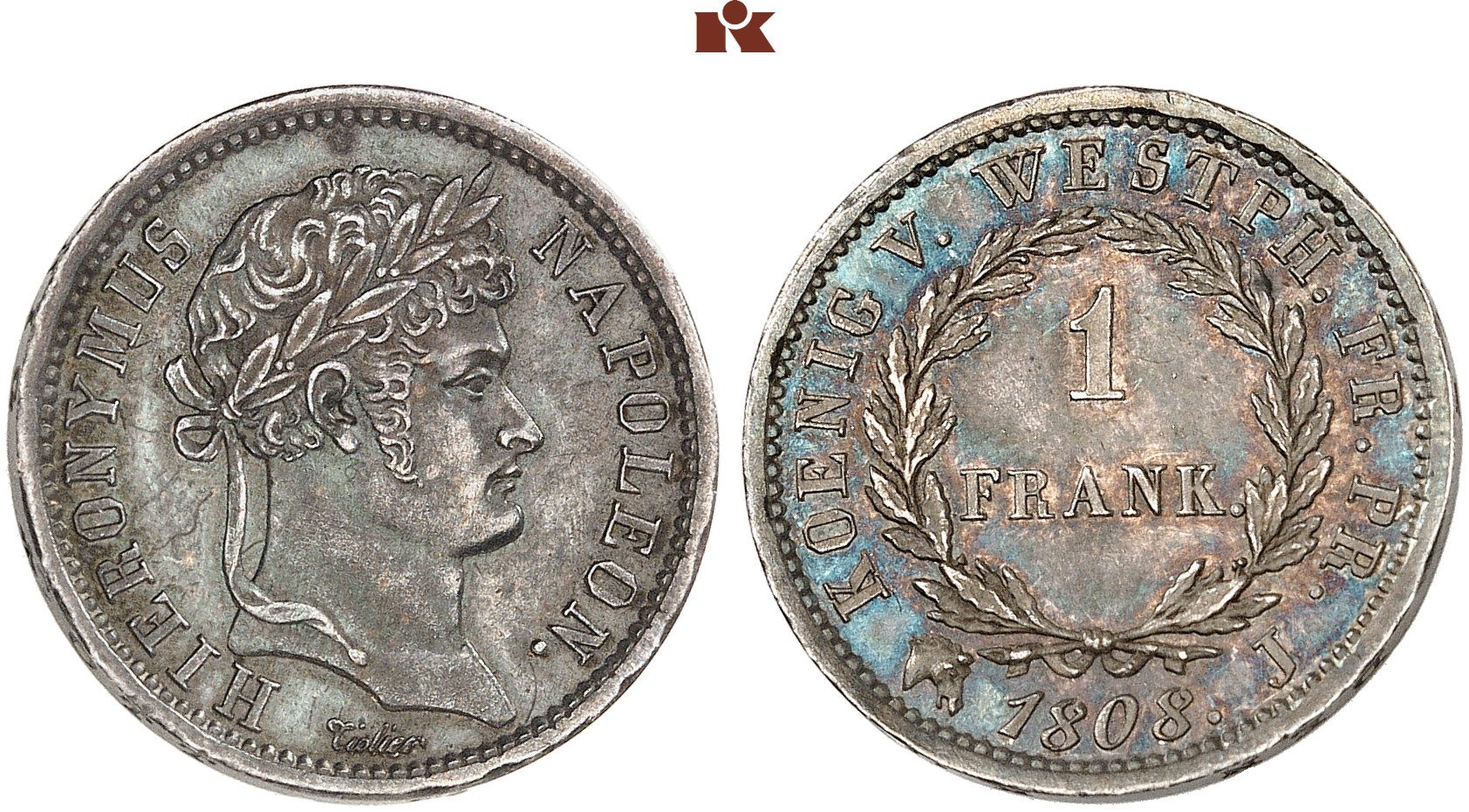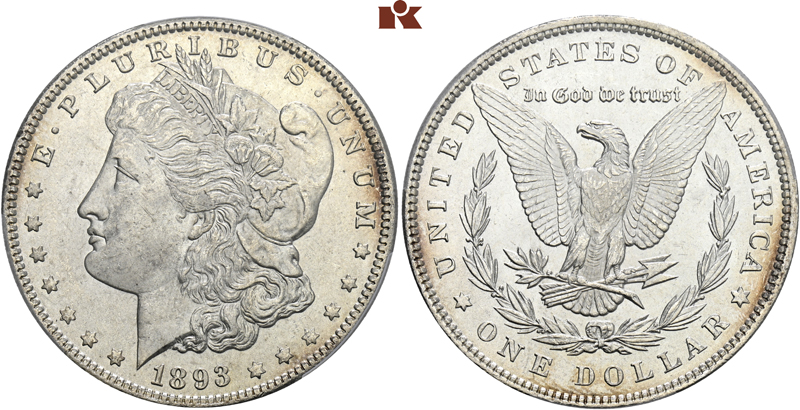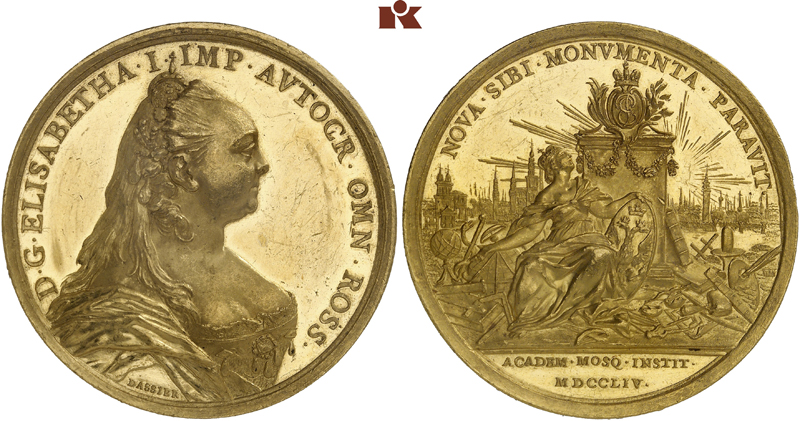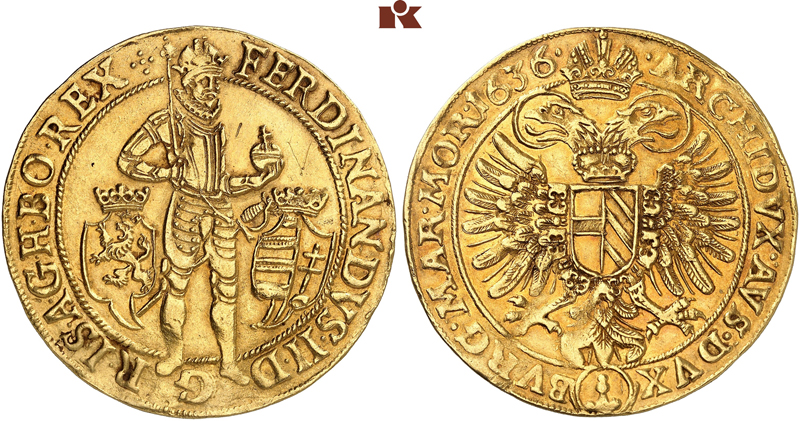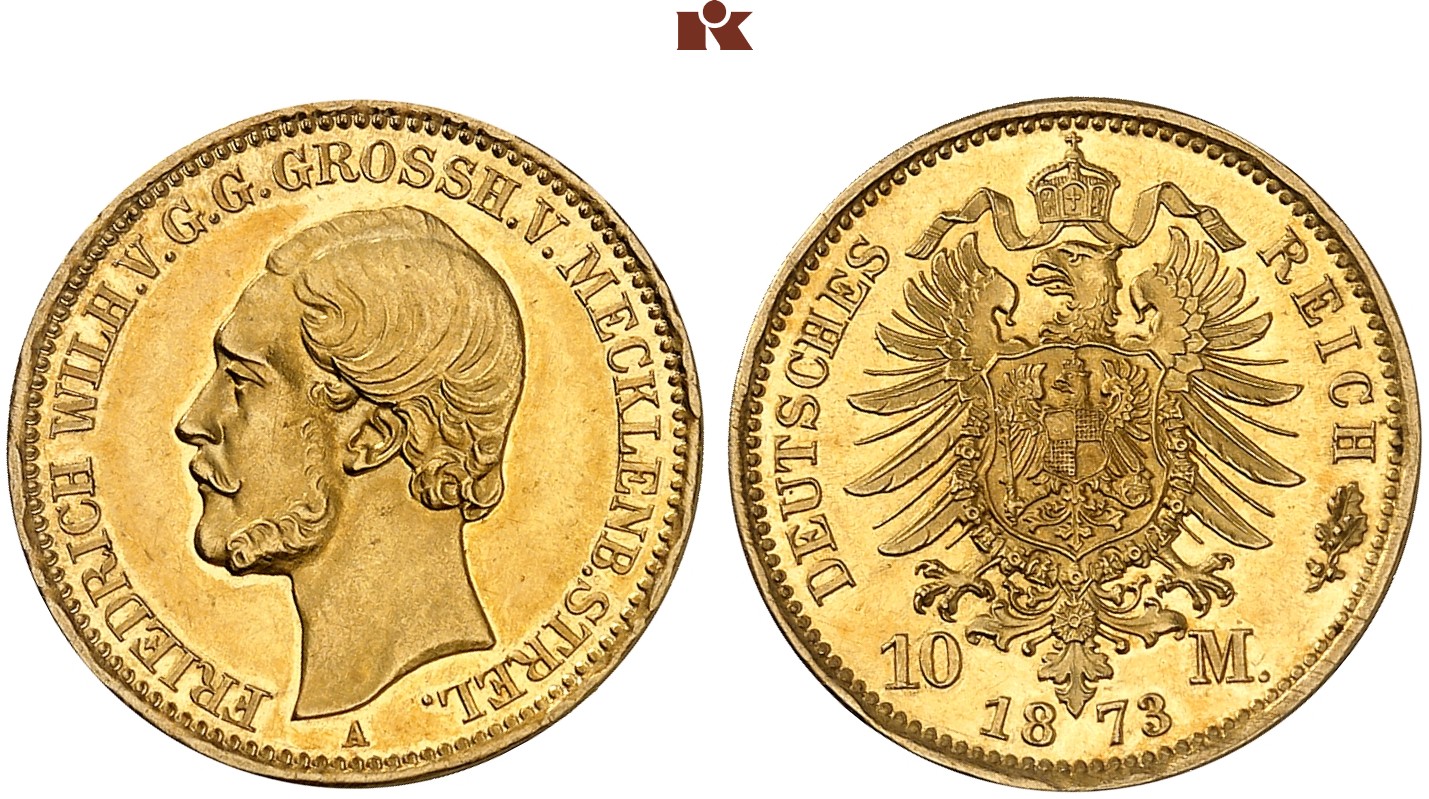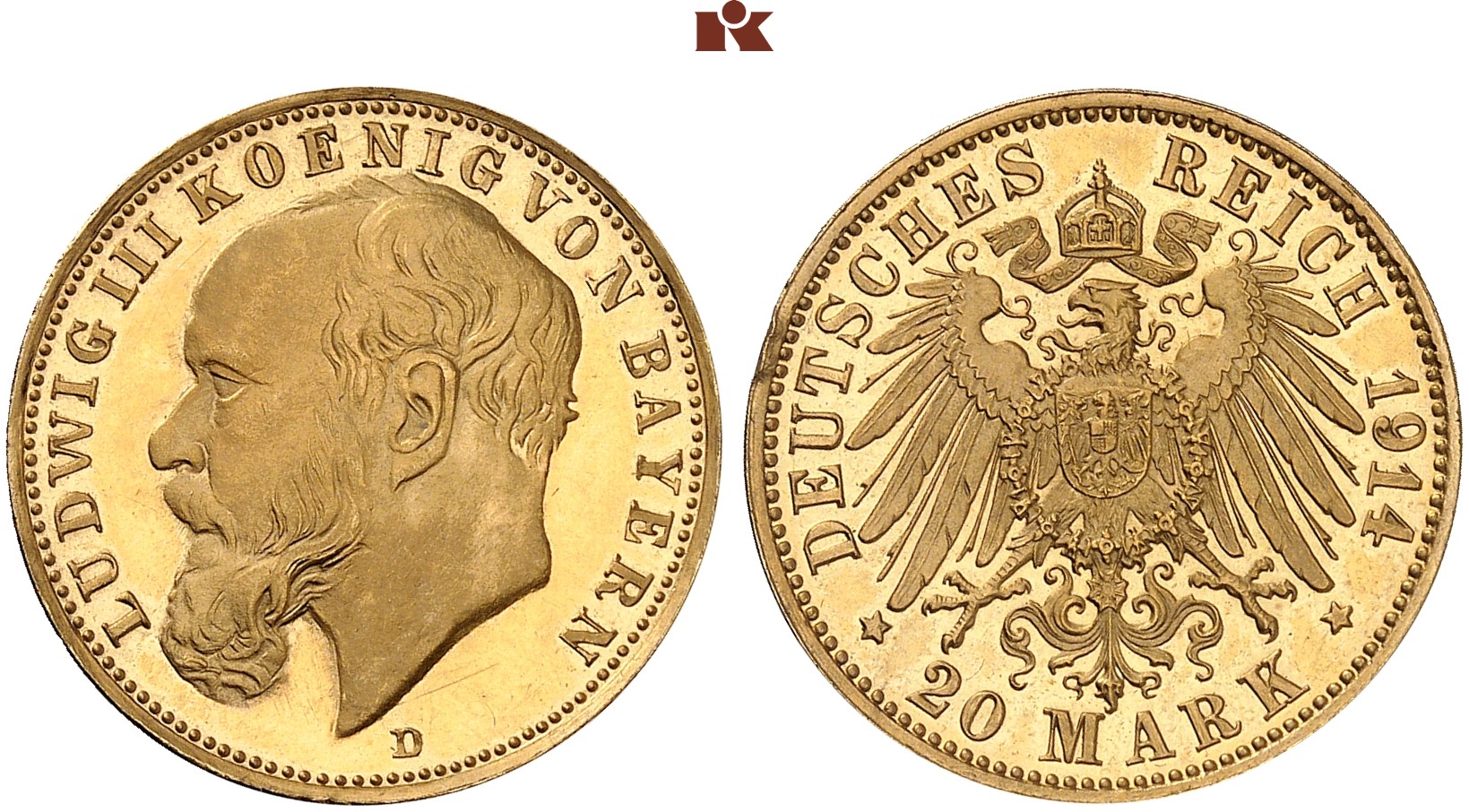Preview of our Spring Auction Sales 382-386
10. February 2023
Eleven extensive special collections will be sold by the Osnabrück auction house Künker in its Spring Auction Sales from 16 to 24 March 2023. The selection ranges from ancient coins to German patterns of the 20th century.
The auction week starts with auction 382. It contains ancient issues, including numerous Greek works of art with provenances that go far back, as well as denarii of the Roman Republic from the Bauss Collection. This is followed by auction 383 with the Wolf Collection of excellent gold coins from ancient times to the 19th century; the focal point is on Roman aurei and solidi as well as on rare issues from Bavaria and Saxony, Great Britain and Italy, including many multiple gold coins. Auction 384 offers the Schedel Collection of coins from the city of Salzburg; here too collectors will find a wealth of spectacular multiple-ducat and multiple-taler issues, which were once used as diplomatic gifts. Next is catalog 385 with the Bader Collection of coins, medals and orders on the subjects of Absolutism, Enlightenment and the French Revolution. Catalog 386 combines several special collections. It starts with the Peter Fleige Collection of exquisite bracteates. This is followed by the Memmesheimer and Beaury Collections of coins and medals from Mainz. The general catalog covers further collections such as the special collection “Cygnus in Nummis” (swans in numismatics), the Schuckmann Collection of coins and medals of Napoleon and his time, as well as a special collection on Brunswick and Lüneburg. Lovers of US coinage will find a small collection of Morgan Dollars, before the Coenen Collection with numerous patters will be on offer in the section of German coins issued after 1871.
Thus, you can once again expect a colorful and exciting auction week, which clearly shows how much trust collectors place in the Künker auction house.
Catalog 382: Coins from the Ancient World
Are you excited about Greek coins of excellent quality and outstanding provenance? In this case, you should not miss out on auction 382 on Thursday, 16 March! It offers a wealth of Greek coins whose provenances date back to the first half of the 20th century. Here are just some of the great names that were among the previous owners of these coins: Sir Arthur Evans, Robert Jameson, Richard Cyrill Lockett, Hyman Montagu, Henri de Nanteuil, Theodor Prowe and Sir Hermann Weber.
There are also many rarities among the denarii of the Roman Republic and the imperatorial period, most of which come from the Fritzotto Bauss Collection.
There is something for everyone in the section of Roman coins from the Roman Imperial Period. The offer ranges from unassuming bronze coins estimated at a few euros to the rare aurei of Commodus, Septimius Severus and even Postumus.
No. 118: Corinth. Stater, 555-515. Very rare. Very fine +. Estimate: 10,000 euros
Catalog 383: The Roger Wolf Collection – Classica et Patria
Catalog 383 contains a collection of a kind that one only gets to see on rare occasions. The lawyer, banker and entrepreneur Roger Wolf (1949-2022) loved gold coins, and he had a well though-out concept for his collection. Although he lived abroad, his family was originally from Germany, Saxony to be precise. After the Second World War, they fled to Munich, where young Roger Wolf grew up. Therefore, we can find extensive runs of Bavarian and Saxon coins in his collection, including many impressive multiple gold coins.
Roger Wolf’s true passion was the Roman Imperial Period. He wanted to own one gold coin each of perfect quality from every emperor. After some time, the collector realized that he would have to wait too long before potential pieces for his collection might come on the market. Therefore, he diversified his collecting interests: first to include coins from ancient Greece, then coins from Great Britain and Italy.
But no matter what coin he bought, he always focused on two aspects. We do not need to talk about the grade of his pieces – every item is of outstanding quality. In addition, Roger Wolf attached great importance to an excellent provenance right from the beginning. He loved to be able to trace back the existence of his pieces on the coin market as far as possible. Therefore, connoisseurs will not only discover excellent rarities in this collection but excellent rarities with impressive provenances that reach far back.
To emphasize this fact, Künker included the picture of the respective piece’s first appearance in the coin trade in this catalog – if possible. This enables collectors to easily check the provenance of the coin even if they do not own an extensive library.
Catalog 384: Coins, Medals and Tokens of Salzburg – The Professor Dr. Franz Schedel Collection
Together with Mages GmbH, the Künker auction house will offer what is probably one of the most important collections of Salzburg coins and medals that have come onto the market in recent years. It was compiled by the surgeon Professor Dr. Franz Schedel, who had a lasting influence on the medical care of many people in the Munich and Passau area. Under his leadership, the small hospital in Passau became the Klinikum Passau, which is now the most important specialized hospital in Lower Bavaria. In 1960, Prof. Schedel also founded his family-led sanatorium, one of the largest oncological rehabilitation facilities in Bavaria. In order to unwind from his demanding work, Prof. Schedel collected coins and medals of the Archbishopric of Salzburg, whose history and coinage he studied throughout his life.
Therefore, the Schedel Collection was assembled with great knowledge and abundant resources. It is a unique ensemble that combines an impressive number of multiple gold and silver coins of the kind that the rich Salzburg bishops had produced for diplomatic purposes and to be used as gifts. However, like any truly great collection, the Schedel Collection contains not only high-priced coins but also small, inconspicuous pfennigs, which were used by ordinary citizens on a daily basis. Therefore, estimates range from 75 euros to 75,000 euros. In other words: everyone, really everyone, who is interested in Salzburg should take a close look at this extensive collection. The accompanying catalog with the biographies of all bishops of Salzburg will certainly become a new standard work.
Every collector creates their own universe based on coins, medals, orders, decorations and other items. Nothing but their interpretation determines why these objects belong together. The Bader Collection, for example, deals with the question of how the absolutism of the early modern period developed into Napoleon’s military dictatorship. With his collection, Frank Bader illustrates how various monarchs depicted their appreciation for the Enlightenment on coins. In this way, he pursued an interesting and demanding question, which led to a second collection: awards and insignia of the French Revolution.
What can we expect from the Bader Collection? Well, for one, there is a rich offer of German coins, mainly from Prussia with a focal point on the philosophical king Frederick II. But you can also discover a great selection of Habsburg coins, especially by Frederick’s rival, Maria Theresa; of course, her Enlightened son Joseph II is also represented. There is also a large run of European coins and medals, for example a selection of Russian pieces and, of course, more than 150 lots of French coins and medals from Louis XV to Napoleon.
The second part of the auction, which is described by the order specialist Michael Autengruber, is almost even more touching. It contains the awards and insignia of the French Revolution, and it really gets to one when we see a lead medal featuring the guillotine that was set up and used in Lyon in 1793.
For anyone interested in history, this catalog certainly offers a wealth of numismatic food for thought.
Catalog 386: Coins and Medals from Medieval and Modern Times with Numerous Special Collections
With auction 386, several important special collections enter the market. The sale starts with the first part of the Peter Fleige Collection of bracteates. The 150 most beautiful pieces can be found in auction 386; a second part will follow online as eLive Auction 77 in April 2023. Geographically speaking, the collection ranges from the north of Germany with Bremen, Hamburg and Lübeck down to Lake Constance.
Two collections perfectly complement each other and present an impressive selection of coins from Mainz: almost 250 lots are offered by the collections of Prof. Dr. Alois M. Memmesheimer and Heinz Beaury. Here, too, collectors can find everything pertaining to the subject of Mainz – from simple pfennigs to multiple gold coins. If you are interested in Mainz issues, make sure to save the date on 22 March 2023. You must not miss out on this sale!
Collectors of Brunswick-Lüneburg can also look forward to an extensive special collection with more than 230 lots. The offer ranges from impressive Renaissance talers to rare lösers, high-quality representative talers (including pieces featuring magnificent mining scenes), to the vereinstalers that were minted shortly before the empire was founded in Hanover.
Two further special collections were not included as separate chapters, but their items were incorporated into the section of German and European coinage. One of them is the “Cygnus in Nummis” collection, which deals with all the ways in which the depiction of a swan can be interpreted. Moreover, Siegfried Schuckmann sells his collection on Napoleon and his time.
Therefore, there is a lot to discover – not only regarding German issues. Among more than 50 lots with coins from the United States, there is a small collection of Morgan Dollars. The undisputed highlight of Künker’s Spring Auction Sales is a rare gold medal by Bloody Mary, the Queen who tried to turn back time in England by reintroducing the Catholic faith. The gold medal was created for her wedding with King Philip II of Spain, and it is actually plausible that the piece offered at Künker was indeed in possession of the English Queen. The outstanding artistic value of this medal has often been highlighted. It is not without reason that this particular specimen was exhibited as part of the landmark exhibition “Renaissance Faces” at the National Gallery in London in 2008/2009.
Let us round off our auction preview with the last collection on sale in the Spring Auction Sales: the Coenen Collection of patterns for German coins minted after 1871. It perfectly complements the small but exquisite offer of coins from this era.
Last but not least, it should be mentioned that auction 386 offers the entire library of Prof. Dr. Niklot Klüssendorf as a single lot. The archivist and historian assembled his extensive specialist library over about 50 years. It contains 2,000 works and has a starting price of 10,000 euros.



